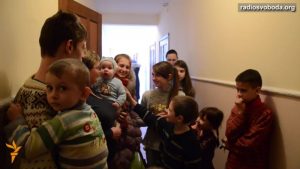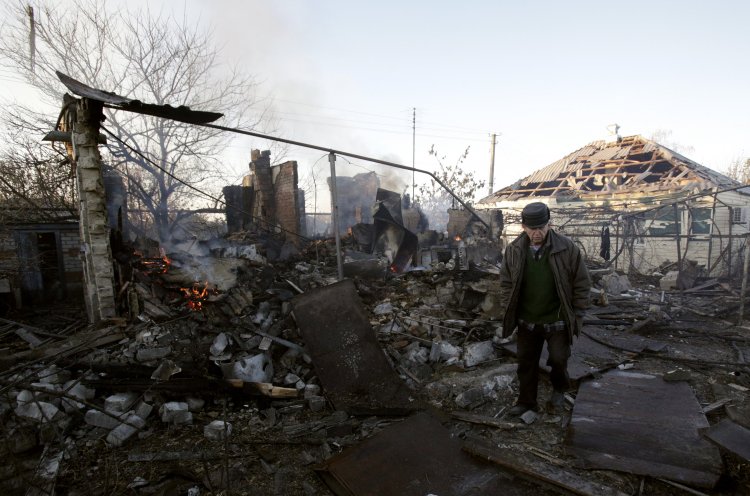The Berizka-1 and Berizka-2 camps for displaced persons near Sloviansk can accommodate about 150 people. Protestant religious communities have organized them here, using a summer camp and a renovated former rehabilitation center for drug addicts. According to activists, the recent wave of spontaneous evacuations from hot spots in the Donetsk Oblast has weakened. People who really want to escape these areas are now finding it impossible to leave.
Svitlana arrived with her children from Sloviansk about a week ago, bringing only a few bags of belongings. She had turned to volunteers at the station, who helped her find shelter. The woman explains that for a long time her family did not dare leave Horlivka, hoping that fighting would end soon. Now they have understood that it will take a long time.
"It had become really unbearable. The children began to be afraid. We had to go. We left everything -- a building, a household, a large garden, Svitlana explains.
Now the family wants to settle down in Krasnyi Lyman and is looking for a place to rent. Meanwhile, they are living together in Berizka. At the camps prayers are said several times a day and people take turns doing kitchen duty and housekeeping.
In the towns of Tonenke, Pisky, Horlivka, Makiivka activists are trying to evacuate those wanting to leave practically under fire, says volunteer Sergey Kosyak, pastor of the Assembly of God Church.
 "In Berizka-1, we settled people from the 'cellars' of Pisky. In Pisky there are big apartment buildings and cellars. And people say they are from such and such cellar. They have become used to living in these communities, and we have resettled them according to these 'cellars.' They didn't even want to live in family units," he says.
"In Berizka-1, we settled people from the 'cellars' of Pisky. In Pisky there are big apartment buildings and cellars. And people say they are from such and such cellar. They have become used to living in these communities, and we have resettled them according to these 'cellars.' They didn't even want to live in family units," he says.
Kosyak explains that there were two major waves of mass departure: in June when active fighting began and then in early January when there was a massive wave of emigration.
According to Kosyak , most of those who wanted to leave have left. Even though the ceasefire has never taken hold, fighting in certain population centers has diminished. During periods of relative "quiet" people do return home, he says. However, because of shelling, volunteers often are unable to get to the really dangerous places to evacuate people.
Sloviansk is now full of displaced persons, the pastor of the Good News (Dobra Novyna ) Church, Peter Dudnik, says. He explains that free soup kitchens have been opened near the train station and volunteers are trying to evacuate and resettle the displaced persons.
"In Vuhlehirsk we thought that everything would be calm. We brought in food packages, began to restore the infrastructure. No one thought there would be this level of destruction. Unfortunately, serious fighting began. As volunteers we went to the most difficult places. The State Emergency Service had provided buses near the mayor's office and whoever came was evacuated. We went house to house and to the cellars taking people away.
Maksym Vasin, acting director of the Institute of Religious Freedom, explains that most of the volunteers in eastern Ukraine have come from the church environment. They become responsible for different types of work: evacuation and assistance to the displaced, delivery of humanitarian shipments to the Donbas, the organization of medical centers.
"There are many denominations. They (the volunteers) represent the Evangelical Protestant churches, the Kyiv Patriarchate (Ukrainian Orthodox Church -- Ed.), the Ukrainian Greek Catholic Church, and other denominations," he says.
The All-Ukrainian Council of Churches recently published an open letter urging the faithful to participate in the defense of the homeland -- as soldiers, volunteers, chaplains or fighters against corruption.




